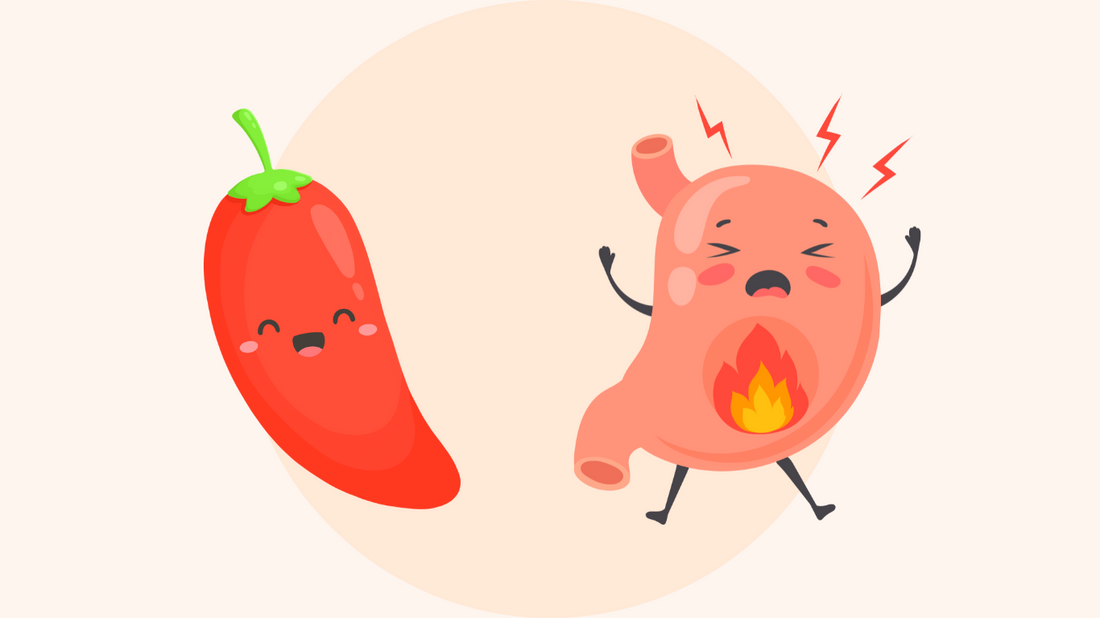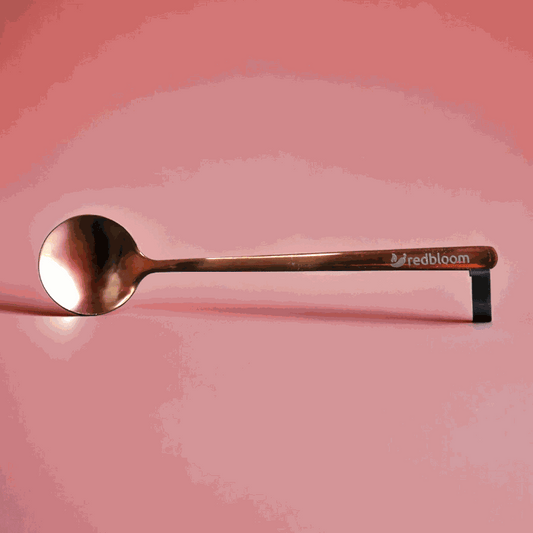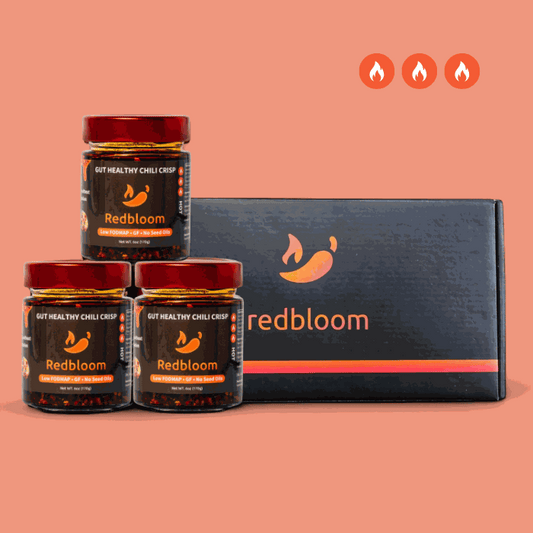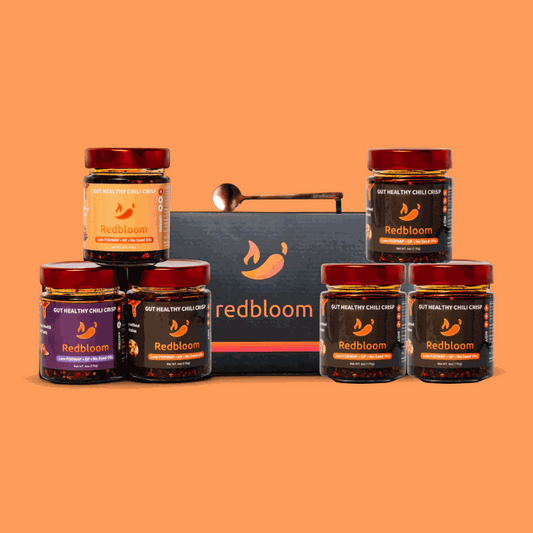Introduction
Love the kick of chili oil and chili crisp but hate the aftermath? You’re not alone. For many people, spicy meals can trigger a burning stomach, cramping, bloating, or an urgent dash to the bathroom. The main driver is capsaicin, the compound that makes chilies hot. It can offer potential benefits like supporting metabolism and pain relief, but it also activates heat-sensitive nerves throughout your digestive tract. The result: discomfort that feels like real damage even when it’s a sensory “false alarm.” This article breaks down how capsaicin affects your gut, why some folks react more than others, and how to keep spice in a healthy routine with smart strategies and safer swaps. [1–5]
What Is Capsaicin and How Does It Affect Your Stomach?
Capsaicin binds to TRPV1 receptors—heat and pain sensors found in your mouth, throat, stomach, and intestines. When activated, your brain interprets a “burning” signal and launches cooling responses like sweating and extra mucus. In the gut, this same signal can feel harsh. [1–3]
-
TRPV1 activation: Sends intense heat signals that your brain reads as burning. [1,4]
-
More acid, faster movement: Spicy foods may increase acid and speed intestinal contractions, which can mean cramps or diarrhea. [2,3]
-
Heightened sensitivity: If you have IBS or functional dyspepsia, those receptors may be easier to trigger. [4,5]
Why Spicy Food Triggers Gut Discomfort
1) TRPV1 Overactivation
When TRPV1 receptors are overstimulated, the gut can respond with more acid and faster muscle contractions—both can hurt. [2,3]
-
Possible outcomes: burning, cramping, urgency. [2,3]
-
Often worse during active gut flares. [4,5]
2) Reflux Mechanisms
Spicy foods are a common reflux trigger. In some people, meals high in spice are associated with heartburn symptoms, likely by affecting the esophagus and gastric environment. [2,4]
-
Burning behind the breastbone after spicy meals. [2]
-
Nighttime symptoms if you lie down soon after eating. [2]
3) Visceral Hypersensitivity
People with IBS or functional dyspepsia can have more TRPV1 expression and a lower pain threshold. Capsaicin can amplify discomfort in this group. [4,5]
-
Symptoms can include prolonged burning, nausea, and bloating. [4,5]
-
Even small amounts may feel intense. [4,5]
Common Symptoms of Capsaicin Sensitivity
Spice reactions can appear right away or hours after you eat. [4,5]
-
Burning or pain in the upper stomach
-
Bloating, gas, or nausea
-
Urgent diarrhea
-
Chest burning or reflux
Why Some People Handle Spice Better
Genetics and Nerve Sensitivity
Some people have fewer or less reactive TRPV1 receptors, which means less perceived pain from capsaicin. [1]
-
Different thresholds explain why one person thrives on hot noodles while another reaches for antacids.
Gut Health and Conditions
IBS, GERD, or dyspepsia can magnify the response to spice. A sensitive lining and irritated nerves make capsaicin feel harsher. [4,5]
-
Flare periods often equal lower spice tolerance. [4,5]
Adaptation Over Time
Gradual exposure can desensitize TRPV1 and raise your comfort threshold. Some studies show reduced pain after steady, low-dose capsaicin. [4]
-
Slow, consistent practice tends to work better than occasional “spice challenges.” [4]
What Science Says: Key Findings
Evidence from clinical and mechanistic studies helps explain who struggles and why. [4,5]
-
IBS-D and spice: Chili-containing meals increased abdominal pain and burning versus spice-free meals. [4]
-
Functional dyspepsia: Capsaicin worsened nausea and pain in sensitive participants. [5]
-
Desensitization: A 6-week course of low-dose capsaicin raised pain thresholds and reduced symptoms in some people. [4]
Why Chili Oil and Chili Crisp Can Hit Harder
Oil can act like a delivery vehicle for capsaicin, spreading it more evenly and possibly prolonging contact with sensitive tissues. Concentrated condiments also pack more heat per spoonful. [1,2]
-
Fat-soluble: Capsaicin dissolves in fat, which may carry heat deeper. [1]
-
Sticks around: Oily sauces can linger on the esophagus and stomach lining. [1,2]
-
Dense dose: A small spoonful can equal a lot of pepper. [1]
Immediate Relief Strategies
These tactics aim to reduce the burn sensation or neutralize acid. [1,6]
-
Dairy: Milk or yogurt contains casein, which can help wash capsaicin away. [1]
-
Sugar water: A light sugar solution may blunt receptor interaction. [6]
-
Antacids: Over-the-counter options (e.g., calcium carbonate) can neutralize acid. [6]
-
Chewing gum: Increases saliva and may help clear capsaicin from the esophagus. [6]
Long-Term Strategies to Reduce Sensitivity
Gradual Exposure
Start with mild heat and add a little more each week if symptoms stay calm. [4]
-
Keep a simple symptom log to track your personal threshold.
Avoid Common Triggers with Spice
Alcohol, very acidic foods, and deep-fried dishes can intensify irritation when combined with heat. [2]
-
Choose gentler cooking methods and simpler sauces on spicy nights.
Support Overall Gut Health
Stress management, fiber-rich meals, and hydration can improve day-to-day tolerance. [4]
-
Consistency matters more than any single “gut fix.”
Choosing Safer Chilies and Condiments
You can keep flavor while lowering the burn. Use these swaps to stay healthy and comfortable.
-
Lower-heat chilies: Poblano, banana pepper, or bell pepper offer flavor with minimal sting. [1]
-
Mind the oil: If chili oil or chili crisp tends to trigger symptoms, cut the portion or dilute with a non-spicy oil. [1,2]
-
Watch acidity: If reflux is an issue, be cautious with very acidic, vinegar-heavy hot sauces at the same meal. [2]
Smart Pairing Tips to Prevent Fallout
Small changes can soften capsaicin’s impact without losing taste. [1,2]
-
Pair with carbs: Rice, bread, or potatoes help dilute heat. [1]
-
Add fat thoughtfully: A little oil or dairy can cushion the stomach lining. [1]
-
Go cooked over raw: Cooking peppers can mellow sharp edges, which some people tolerate better. [2]
When to See a Doctor
If you have frequent burning pain, vomiting, black or bloody stools, or weight loss linked to spicy foods, check in with a clinician. Conditions like GERD, ulcers, or gastritis may need targeted care. [2,4]
-
Seek urgent care for severe or persistent symptoms.
FAQs
1) Can spicy food permanently damage my stomach?
Usually no. For most people, spice causes temporary symptoms. If you have an underlying condition, frequent irritation can worsen inflammation or symptoms. Get evaluated if problems persist. [2]
2) Is chili oil worse than fresh chilies?
Often yes for sensitive eaters. Oil can carry capsaicin efficiently and may linger, which some people find tougher on reflux and gastritis. Portion control helps. [1,2]
3) How do I build tolerance safely?
Increase spice gradually over several weeks. Keep portions small at first, then step up only when symptoms are quiet. This desensitization approach has support in clinical research. [4]
4) Are there health upsides to chili?
Capsaicin has been studied for metabolic support and pain modulation, but responses vary. Enjoy for flavor first and adjust to your gut comfort. [1]
5) What’s the safest way to enjoy spicy food with a sensitive stomach?
Pair with carbs, use small amounts of fat or dairy, avoid alcohol and heavy acidity on spicy nights, and stop at the first sign of discomfort. [1,2]
Conclusion
Spice doesn’t have to be your digestive enemy. By understanding how capsaicin interacts with TRPV1 receptors and by using smart tactics—gentler portions, careful pairings, and gradual exposure—you can keep chili oil and chili crisp on the table without sidelining your gut. Listen to your body, adjust the heat, and let flavor lead the way to a more healthy balance.
Bibliography
[1] Pfizer. Bodily Functions Explained: Why Spicy Foods Make Your Mouth Burn. https://www.pfizer.com/news/articles/bodily_functions_explained_spicy_food_reaction
[2] University Hospitals. Spicy Food Challenges: Harmful or Healthy? https://www.uhhospitals.org/blog/articles/2022/06/spicy-food-challenges-harmful-or-healthy
[3] LIVESTRONG. Stomach Pain After Eating Spicy Food. https://www.livestrong.com/article/286244-stomach-pain-after-eating-spicy-food/
[4] Bhat YM, et al. Capsaicin and Gastrointestinal Disorders. J Neurogastroenterol Motil. 2010;16(2):131–137. https://www.jnmjournal.org/journal/view.html?doi=10.5056%2Fjnm.2010.16.2.131
[5] Hammer J. Capsaicin and Pain in Functional Dyspepsia/IBS. (Study data summarized within 2010 review and related clinical literature.) https://pmc.ncbi.nlm.nih.gov/articles/PMC4102147/
[6] LIVESTRONG. Remedies for Upset Stomach From Spicy Food. https://www.livestrong.com/article/521984-remedies-for-upset-stomach-from-spicy-food/





